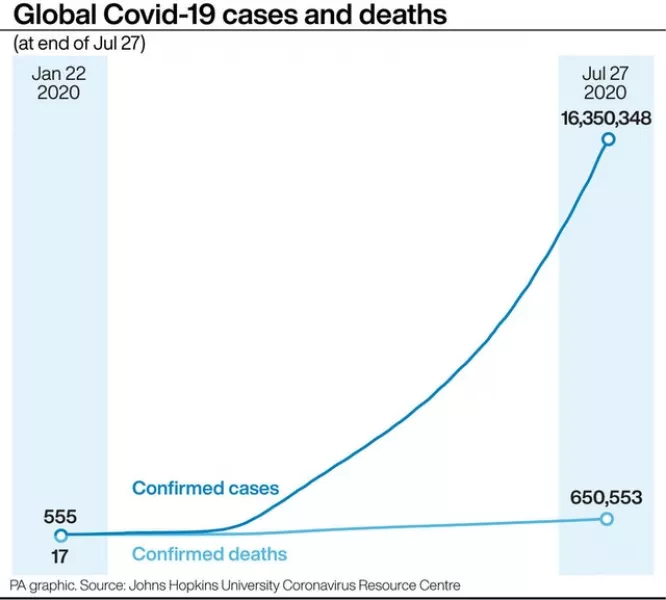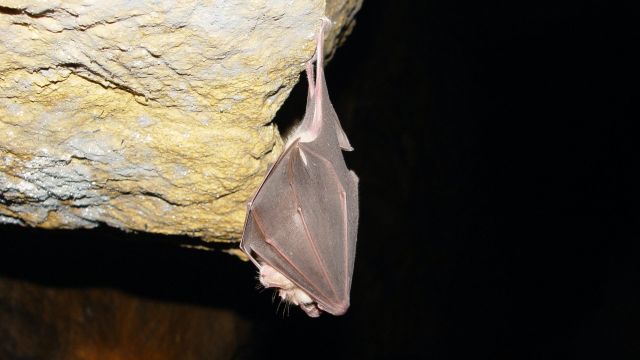The scientists have traced back the origins of SARS-CoV-2, with their findings having implications for preventing future pandemics from the same lineage.
The team used three different approaches to identify and remove regions in the genome before reconstructing histories and comparing them to see which specific viruses have appeared in the past.
They found the lineage of viruses that SARS-CoV-2 belongs to diverged from other bat viruses from about 40 to 70 years ago.
We should have been better prepared for a second SARS virus
David L Robertson, professor of computational virology at the MRC-University of Glasgow Centre for Virus Research, said the findings suggest “other viruses that are capable of infecting humans are circulating in horseshoe bats in China”.
He said: “SARS-CoV-2’s receptor-binding domain sequence has so far only been found in a few pangolin viruses.
“Furthermore, the other key feature thought to be instrumental to SARS-CoV-2’s ability to infect humans – a polybasic cleavage site insertion in the Spike protein – has not yet been seen in another close bat relative of the SARS-CoV-2 virus.
“While it is possible that pangolins may have acted as an intermediate host facilitating transmission of SARS-CoV-2 to humans, no evidence exists to suggest that pangolin infection is a requirement for bat viruses to cross into humans.”
He explained: “Instead, our research suggests that SARS-CoV-2 likely evolved the ability to replicate in the upper respiratory tract of both humans and pangolins.
“The key to successful surveillance is knowing which viruses to look for and prioritising those that can readily infect humans.
“We should have been better prepared for a second SARS virus.”

Although SARS-CoV-2 is 96% similar to the RaTG13 coronavirus – sampled from a Rhinolophus affinis horseshoe bat in 2013 in Yunnan, China – the team found it only diverged from that strand in 1969.
The findings appear in Nature Microbiology with authors from institutes including Xi’an Jiaotong-Liverpool University in Suzhou, China; the University of Hong Kong, the University of Texas at Arlington, and the University of Edinburgh.
It also comes the day after the UK’s first confirmed case of coronavirus in a pet cat – although evidence suggests it is not possible for felines to pass the virus on to humans.
The team suggests preventing future pandemics will require better sampling within wild bats as well as human disease surveillance systems.
Maciej Boni, associate professor of biology at Penn State, warned the Covid-19 pandemic “will not be our last”.
He said: “Coronaviruses have genetic material that is highly recombinant, meaning different regions of the virus’s genome can be derived from multiple sources.
“This has made it difficult to reconstruct SARS-CoV-2’s origins – you have to identify all the regions that have been recombining and trace their histories.
“We put together a diverse team with expertise in recombination, phylogenetic dating, virus sampling, and molecular and viral evolution.”
He added: “We were too late in responding to the initial SARS-CoV-2 outbreak but this will not be our last coronavirus pandemic.
“A much more comprehensive and real-time surveillance system needs to be put in place to catch viruses like this when case numbers are still in the double digits.”







